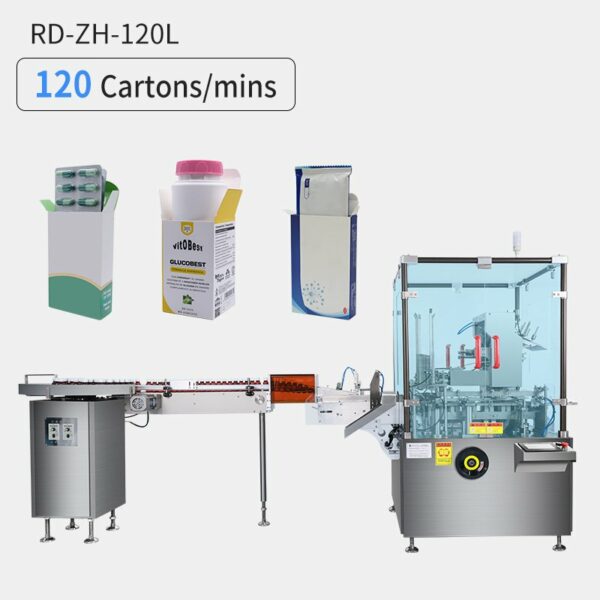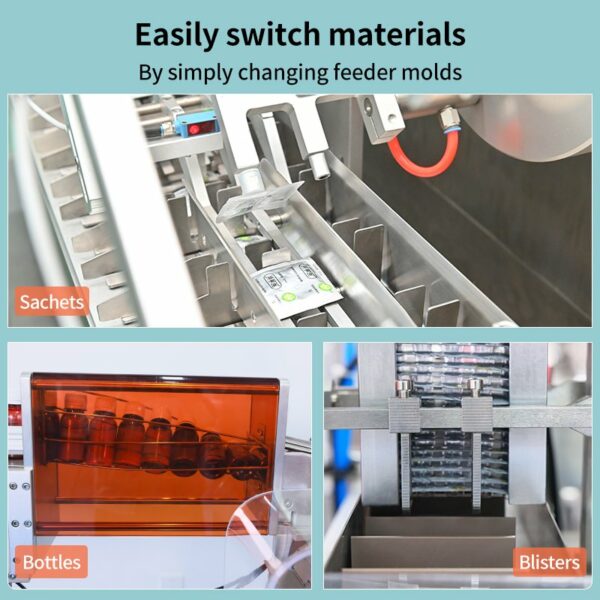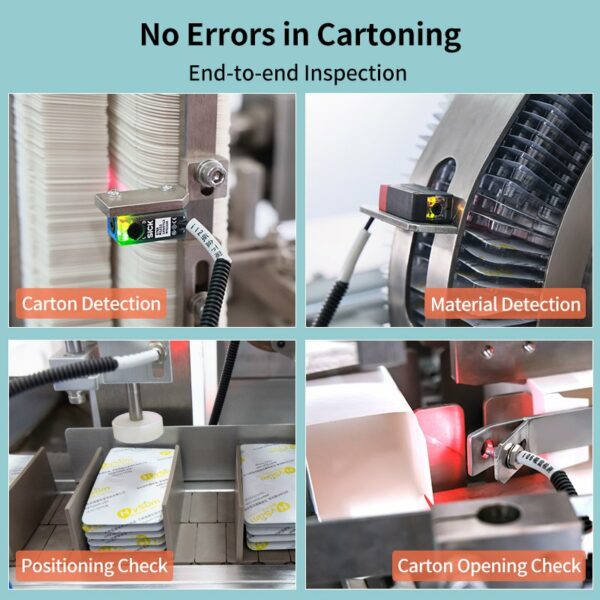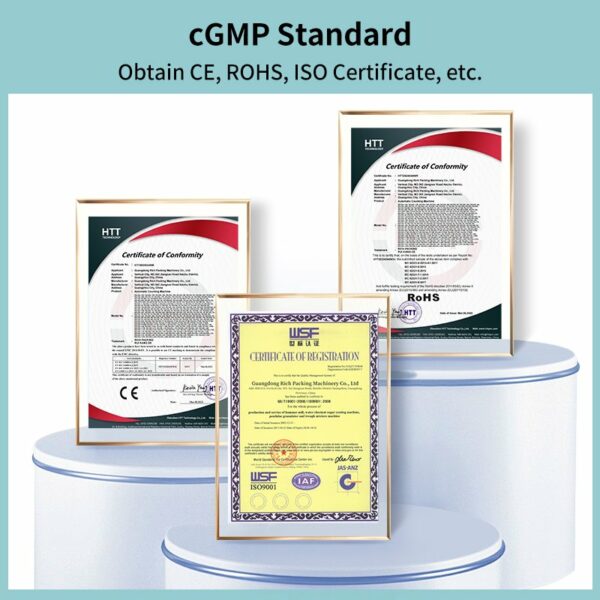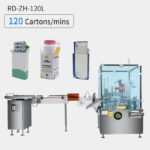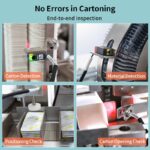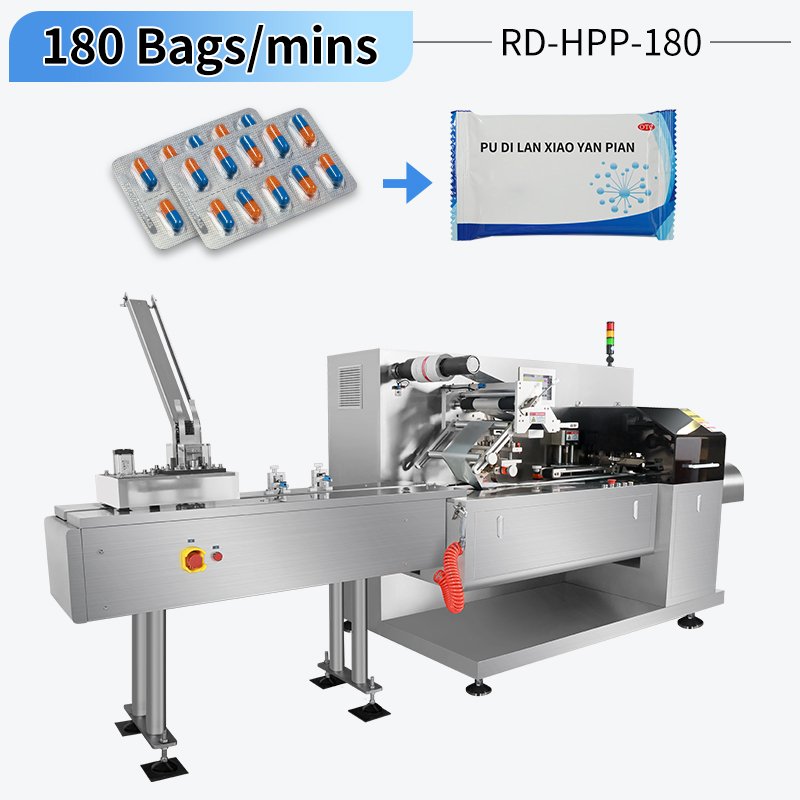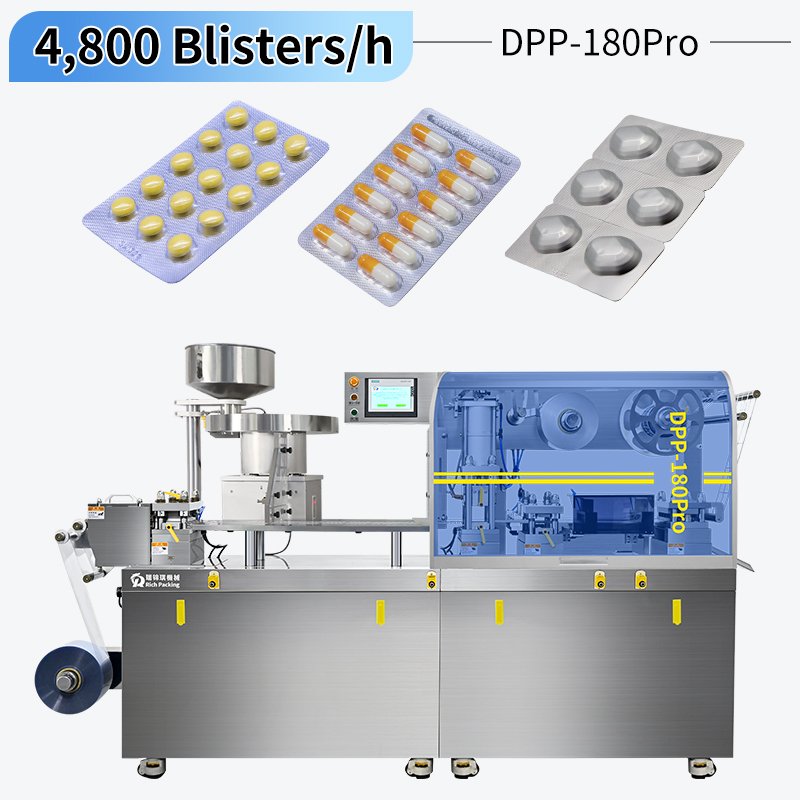به هر داروخانه، سوپرمارکت یا راهروی کالاهای مصرفی بروید. جعبههای مرتب شدهای که میبینید—که داروی بدون نسخه شما، محصول جدید مراقبت از پوست شما یا حتی یک گجت الکترونیکی کوچک را در خود دارند—همه یک منبع مشترک دارند. آنها احتمالاً نه توسط دستان انسانی، بلکه توسط کار دقیق و بیوقفه یک ماشین کارتنسازی مونتاژ، پر و بسته شدهاند. این تجهیزات که اغلب قهرمان ناشناخته خطوط بستهبندی مدرن هستند، برای کارایی، بهداشت و سرعت در صنایع بیشماری اساسی هستند.
برای کسانی که در تولید و بستهبندی مشغول به کار هستند، درک قابلیتهای ماشینهای کارتنسازی تنها یک دانش فنی نیست—این کلیدی برای بهینهسازی جریان تولید و حفظ رقابت است.
چگونه یک ماشین کارتنسازی کار میکند؟
در قلب یک ماشین کارتنسازی، فرآیند قرار دادن خودکار محصولات در کارتنهای تا شده و مهر و موم کردن آنها وجود دارد. در حالی که پیکربندیها متفاوت است، عملیات اساسی یک توالی منطقی و تمیز را دنبال میکند که قابلیت اطمینان قابل توجهی را تضمین میکند. این فرآیند را میتوان به چهار مرحله کلیدی تقسیم کرد:
ساخت جعبه: دستگاه کارتنهای تا شده را از دستگاه تغذیه کارتن میگیرد. یک فنجان مکش یا بازوی مکانیکی یک کارتن خالی را برمیدارد، آن را باز کرده و به شکل یک جعبه مستطیلی در میآورد. در این مرحله، جعبه از هر دو طرف باز است و آماده دریافت محتویات خود است.
بارگذاری محصول: این قلب عملیات است. جعبه شکلگرفته از طریق زنجیره نقاله به داخل دستگاه منتقل میشود. در حین حرکت، محصول وارد میشود. عمدتاً، ورقهای تاخیری، بطریها، کیسههای کوچک و سایر محصولات توسط نوار نقاله منتقل میشوند. دستگاه تا کن بهطور خودکار دستورالعملهای آماده شده را تا کرده و با محصول حرکت میکند. زمانی که جعبه، محصول و دستورالعملها در یک موقعیت قرار دارند، میله فشار محصول و دستورالعملها را به داخل جعبه فشار میدهد و فشار دادن کامل میشود.
تا کردن و مهر و موم کردن: پس از قرار دادن محصول و دستورالعملها در جعبه، دو گوش کوچک در ورودی جعبه توسط یک دستگاه مکانیکی تا میشوند، زبان جعبه از دستگاه چاپ شماره بچ عبور میکند و سپس از دستگاه وارد کردن زبان مکانیکی عبور میکند. در صورت لزوم، یک دستگاه چسب ذوب داغ میتواند در ایستگاه وارد کردن زبان برای مهر و موم کردن تنظیم شود.
تخلیه: جعبهای که بهطور ایمن مهر و موم شده و اکنون بهطور کامل بستهبندی شده است، بر روی نقاله برداشت تخلیه میشود. اکنون آماده مرحله بعدی در فرآیند است که میتواند بستهبندی، بستهبندی جعبه یا برچسبگذاری باشد.
این چرخه پیوسته و بدون درز، ازدواج کاملی از مهندسی مکانیک و کاربرد عملی را نشان میدهد.
چندکاره بودن در عمل
قدرت واقعی یک ماشین کارتنسازی در قابلیت انطباق آن نهفته است. این ماشین به یک صنعت یا نوع محصول خاص محدود نمیشود. توانایی آن در مدیریت دامنه وسیعی از اقلام، آن را به یک دارایی ضروری تبدیل میکند.
داروسازی: این یک کاربرد اصلی است. کارتنزنها برای بستهبندی تاخیری (بستههای دارویی) استفاده میشوند و اطلاعات ضروری بیمار و شواهد دستکاری را فراهم میکنند. آنها همچنین بطریهای شربت سرفه یا مکملها و لولههای کوچک پماد یا کرم را بهطور کارآمد مدیریت میکنند.
غذا و نوشیدنی: از چای کیسهای و ساشههای سوپ تا اقلام نانوایی بستهبندی شده بهصورت جداگانه یا کپسولهای قهوه خاص، کارتنزنها یک لایه حفاظت و ارائه برند اضافه میکنند.
محصولات آرایشی و بهداشتی: صابونهای لوکس، بطریهای لوسیون و لولههای مراقبت از پوست معمولاً در جعبههای زیبا ارائه میشوند، که این کار بهخوبی برای کارتنزنهای با سرعت بالا و عمل ملایم مناسب است.
کالاهای مصرفی: الکترونیکهای کوچک، اقلام سختافزاری (مانند لامپها) و محصولات لوازمالتحریر همگی از حفاظت ساختاری و ارائه حرفهای که یک کارتن فراهم میکند، بهرهمند میشوند.
ایجاد یک خط بستهبندی بدون درز
در حالی که یک ماشین کارتنسازی مستقل بهرهوری را افزایش میدهد، پتانسیل واقعی آن زمانی آزاد میشود که با سایر تجهیزات بستهبندی ادغام شود. این یک خط بستهبندی هماهنگ و انتها به انتها ایجاد میکند که کار دستی را به حداقل میرساند، هزینههای نیروی کار را کاهش میدهد و خروجی را به حداکثر میرساند.
ادغام با ماشین بستهبندی تاخیری
در بستهبندی دارویی، این یک ترکیب کلاسیک و بسیار کارآمد است. یک ماشین تاخیری حفرههای پلاستیکی را تشکیل میدهد، آنها را با قرصها یا کپسولها پر میکند و با یک درب فویلی مهر و موم میکند. بسته تاخیری کامل سپس بهطور مستقیم به کارتن منتظر ماشین کارتنسازی منتقل میشود. یک تغذیهکننده خودکار بروشور معمولاً در این نقطه ادغام میشود و بروشور اطلاعات را در کنار بسته تاخیری در جعبه قرار میدهد. این یک خط پیوسته و با سرعت بالا از قرصهای آزاد به یک محصول کاملاً بستهبندی شده، مطابق و آماده مصرف ایجاد میکند.
ادغام با خط شمارش و پر کردن بطری
برای محصولاتی مانند ویتامینها، مکملها یا اقلامی که بهصورت شمارش (قرصها یا کپسولها) فروخته میشوند، ادغام با یک خط بطریسازی شمارش قرص و کپسول ضروری است. خط شمارش بطریهای پلاستیکی را با تعداد دقیقی از اقلام پر کرده و درب را روی آنها قرار میدهد. این بطریهای پر شده سپس بهطور مستقیم به ماشین کارتنسازی منتقل میشوند، که جعبهای را میسازد، بطری را وارد میکند و معمولاً قبل از مهر و موم کردن یک بروشور اضافه میکند. این ادغام دقت شمارش را تضمین کرده و یک جریان صاف و بدون وقفه از اجزای عمده به کالاهای بستهبندی شده نهایی ایجاد میکند.
نتیجهگیری
یک ماشین کارتنسازی بسیار بیشتر از یک بستهبند ساده است. این یک سیستم چندکاره، دقیق و هوشمند است که پل حیاتی بین بستهبندی اولیه (تاخیریها، بطریها، ساشهها، لولهها) و محصول نهایی که به مصرفکننده میرسد، تشکیل میدهد. توانایی آن در مدیریت دامنه وسیعی از محصولات و، مهمتر از همه، ادغام بدون درز در خطوط بستهبندی خودکار، آن را به یک سنگ بنای تولید مدرن تبدیل میکند. با تضمین سرعت، ثبات و بهداشت، نه تنها از محصولات محافظت میکند بلکه بهطور قوی کیفیت و ارزش برند را در قفسههای سراسر جهان منتقل میکند. سرمایهگذاری در راهحل مناسب کارتنسازی یک تصمیم استراتژیک برای هر کسبوکاری است که به دنبال بهینهسازی عملیات و تقویت حضور خود در بازار است.
